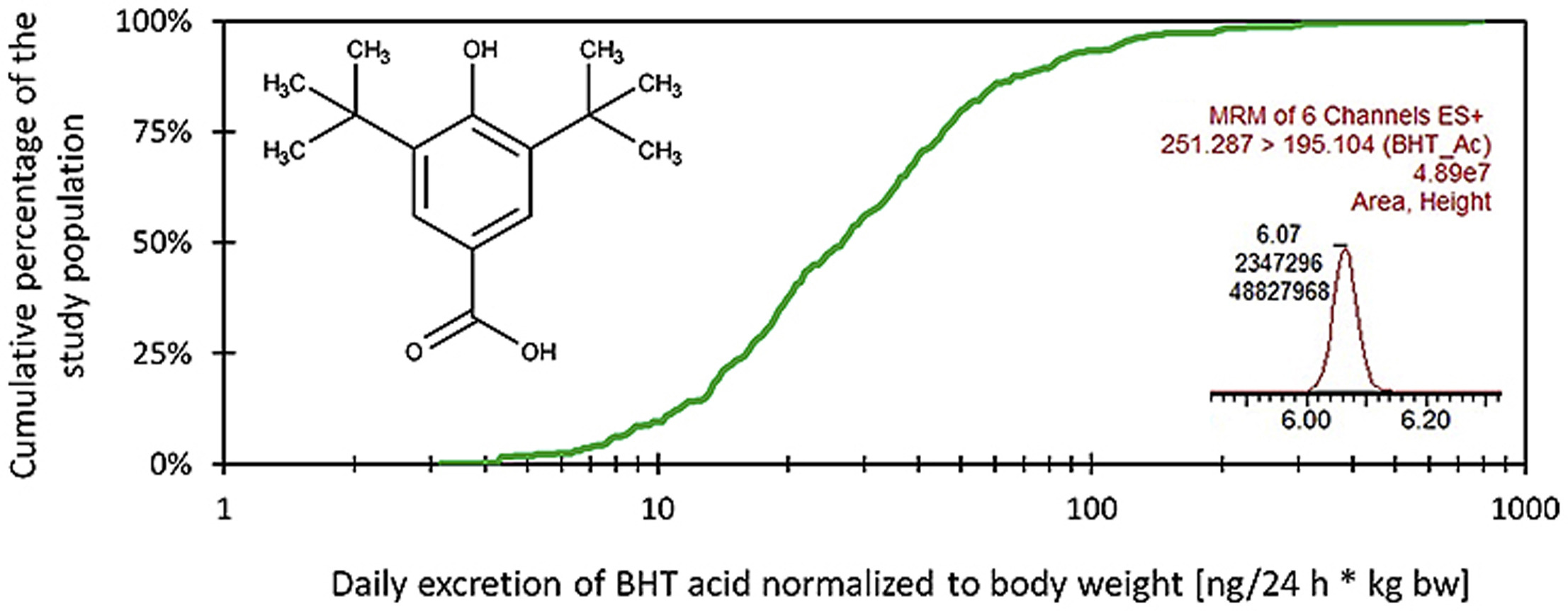A biomonitoring study assessing the exposure of young German adults to butylated hydroxytoluene (BHT)
Schmidtkunz, Christoph; Küpper, Katja; Weber, Till; Leng, Gabriele; Kolossa-Gehring, Marike
International Journal of Hygiene and Environmental Health 228 (2020), July 2020, 113541; online 5 May 2020
Abstract
The antioxidant 2,6-di-tert-butyl-4-methylphenol (butylated hydroxytoluene, BHT) is used ubiquitously in food, cosmetics, pharmaceuticals, fuels, plastics, rubbers and many other products. Therefore, exposure of the general population to this substance is likely.
We analyzed the BHT metabolite 3,5-di-tert-butyl-4-hydroxybenzoic acid (“BHT acid”) in 24-h urine samples from the German Environmental Specimen Bank with the aim of gaining a better understanding of the internal burden of BHT in young nonspecifically exposed adults. The study population consisted of students between 20 and 29 years of age at the time of sampling, all from Halle/Saale in Central Germany. In total, 329 samples collected in the years 2000, 2004, 2008, 2012, 2015, and 2018 were measured by ultra high performance liquid chromatography–tandem mass spectrometry (UHPLC-MS/MS).
BHT acid was detected above the limit of quantification (0.2 μg/L) in 98% of the samples. The median of the measured concentrations was 1.06 μg/L and 1.24 μg/g creatinine respectively, the median of the daily excretion was 1.76 μg/24 h and – additionally normalized for body weight – 26.8 ng/24 h × kg bw respectively. The corresponding 90th percentiles were 3.28 μg/L, 3.91 μg/g creatinine, 5.05 μg/24 h, and 81.9 ng/24 h × kg bw. Medians of creatinine-corrected values were slightly higher in women than in men, while the opposite situation was observed for the volume concentrations and the 24-h excretion values (not corrected for body weight). Values simultaneously normalized both for 24-h excretion and body weight did not exhibit any significant differences between males and females, probably indicating a virtually identical magnitude of exposure for both genders. The background exposure of the investigated population was found to be largely constant since the year 2000, with only weak temporal trends at most.
Daily intakes were estimated from excretion values and found to be largely below the acceptable daily intake (ADI) of BHT at 0.25 mg/kg bw: our worst-case estimate is a daily BHT intake of approximately 0.1 mg/kg bw at the 95th percentile level. However, these intake assessments rely on very limited quantitative data regarding human metabolism of BHT.
doi: 10.1016/j.ijheh.2020.113541
